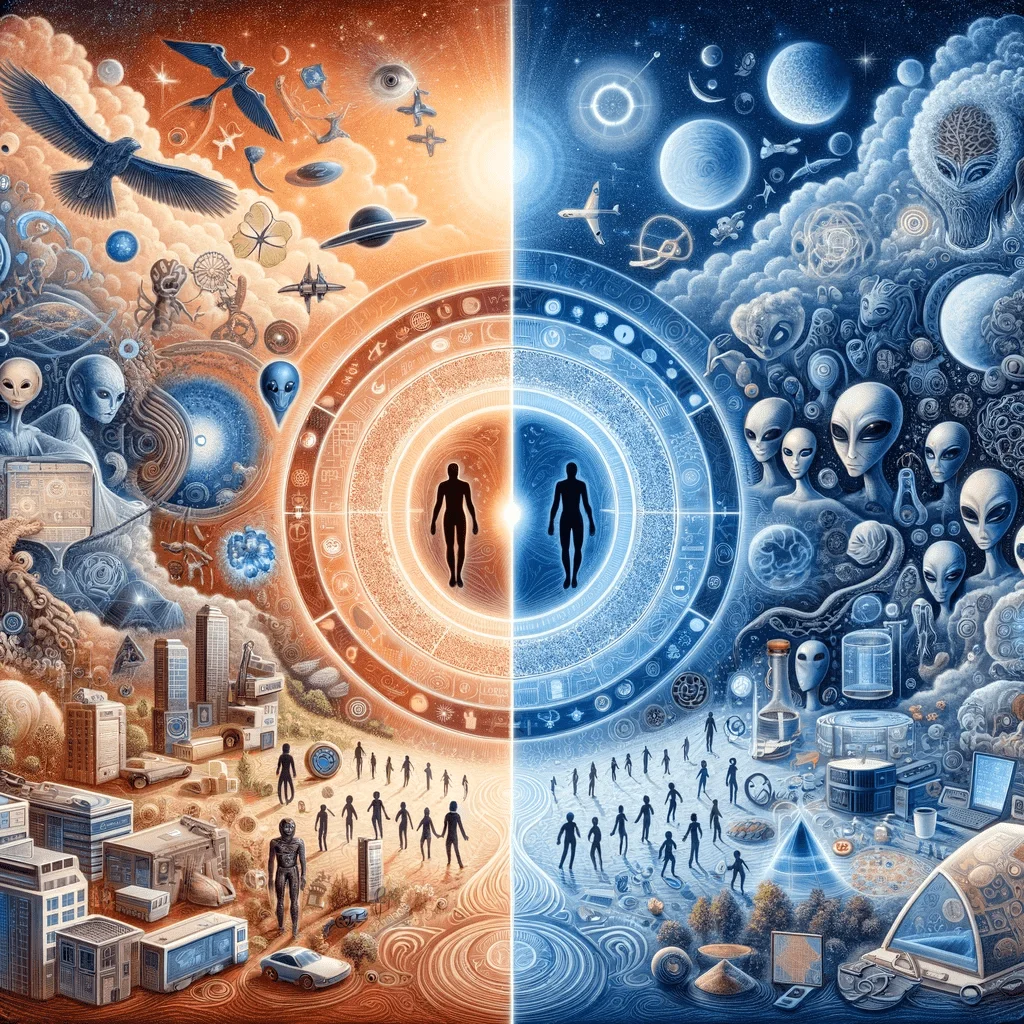Acclimating to Extraterrestrials: A Pathway to Intergalactic Integration

Humanity has long been fascinated by the possibility of extraterrestrial life. The question, “Are we alone in the universe?” has inspired countless books, movies, and scientific investigations. Yet, a more complex question lies just beyond: “How would we interact with an alien civilization, should we encounter one?” This article proposes a hypothetical pathway for how we might gradually acclimatize to an extraterrestrial presence and eventually integrate with them, based on our understanding of human sociology and psychology.
The steps an advanced alien civilization might take to acclimatize humans to their presence would be long. Based on our understanding of human psychology and sociology, we can make a few educated guesses:
- Gradual Disclosure: To prevent panic or societal disruption, aliens might start with subtle hints of their presence. This could involve seemingly unexplainable phenomena, signs of advanced technology, or non-threatening encounters.
- Increase in Frequency and Clarity: As people become used to these events, they might gradually increase the frequency and clarity of their signs. This could involve clearer sightings, direct interactions, or more overt uses of advanced technology.
- Direct Communication: Once humanity is accustomed to their presence, they might start direct communication. This could be with individuals at first, slowly extending to larger groups, institutions, and eventually world governments.
- Physical Contact: After a period of direct communication, physical contact might occur. Again, this would likely start with individuals and slowly extend to larger groups. It’s also possible they might first contact non-human animals or plants to help us acclimatize to their physical forms.
- Integration: Finally, once humanity has had time to adjust to their physical presence and communicate directly, some form of integration might occur. This could involve exchange of information, technology, cultural elements, or even individuals.
- Collaborative Projects: After integration, there could be cooperative efforts between humans and aliens. These might be scientific explorations, cultural exchanges, or mutual assistance in resolving shared challenges. This phase would establish a strong basis of common interest and shared goals.
- Establishment of Interspecies Institutions: To formalize and facilitate this cooperation, new institutions might be established. These could include scientific organizations, diplomatic bodies, shared governments, or even interspecies schools or universities.
- Expansion: Once these institutions are in place, the interaction and cooperation between humans and aliens could start to expand. This might involve more individuals, more areas of cooperation, more shared institutions, and so on. This phase would lead to the complete normalcy of interspecies interaction.
- Transcendence: Finally, over a long enough period of time, the distinction between humans and aliens might start to blur. Through cooperation, cultural exchange, shared institutions, and possibly even interbreeding, the line between human and alien might become less important or even disappear altogether.
- Shared Evolution: In the very long term, humans and aliens might start to influence each other’s evolution. This could involve genetic mixing, the influence of shared technology on our development, or the shaping of our cultures and societies by each other.
As for how long this process might take, it’s highly uncertain. It would depend on many factors, including the intentions and patience of the aliens, the reactions of humans, the speed at which information spreads, the current state of society and technology, and many others.
Given that it can take decades or even centuries for major societal changes to occur, it’s possible that a process like this could take anywhere from a few decades to a few centuries.
The timeline is also uncertain but given that major societal changes often take centuries or even millennia, it’s plausible that this process could extend well beyond the 24th century.
The question is not just whether we are ready to meet them, but also whether we are prepared to change, grow, and evolve in ways we can barely imagine.


